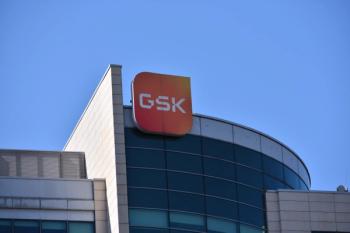
- BioPharm International-01-01-2016
- Volume 29
- Issue 1
Outsourcing Outlook for 2016
Industry experts discuss what the outsourcing market holds for 2016.
To find out what the outsourcing industry may look like in 2016, BioPharm International spoke with Elliott Berger, vice-president of global marketing and strategy at Catalent Pharma Solutions; Saharsh Rao Davuluri, president of contract research, Neuland Labs; Michael Lehmann, president, global PDS and executive vice-president global sales & marketing, Patheon; Paul Dupont, vice-president marketing and business development, Ropack Pharma Solutions; Mark Rogers, senior vice-president, Life Science Services, SGS North America; and Peter Soelkner, managing director Vetter Pharma International GmbH.
Market consolidationBioPharm: The contract services and manufacturing market has experienced consolidation in the past year. What are the implications of consolidation for drug owners in terms of services available and the cost of those services?
Berger (Catalent): Ongoing consolidation enables major pharmaceutical companies to optimize their supply networks and source a greater range of services and technologies from fewer partners. With a more rationalized approach to sourcing, it is easier for buyers to work with long-term strategic partners to create joint quality and operational scorecards against which to measure suppliers, and this gives flexibility to monitor and improve global supply chains.
Consolidation of allied services into larger organizations creates partners that are, on the whole, more flexible to clients’ demands and have an attitude of expansion and investment in new technologies, global capacity, and world-class quality systems to match the future demands of sponsors. This may include co-creating large custom manufacturing suites that can accommodate new launches or tech transfers with specific complex requirements from pharmaceutical clients who look to free-up internal capacity; or the placement of products which have been launched or acquired into the company’s portfolio and where no in-house capacity currently exists.
As ever in the pharma industry, new medicines are becoming increasingly more complex, and the ability of contract service companies to create customized solutions is key to ongoing success. Products are becoming more ‘global’, and the ability of service providers to offer a global supply, with the oversight of multiple regulatory agencies, has never been more prescient.
Lehmann (Patheon): It’s true that the contract development and manufacturing industry has experienced significant consolidation in recent years. The good news is that there are solid benefits for pharmaceutical companies that come from outsourcing partners who have achieved strategic consolidations. The increased bandwidth, capacity, and capabilities, together with an expanded regional and/or global presence, are valuable to biopharma companies. Improved economies of scale and a simplified supply chain are also important benefits.
Soelkner (Vetter): Consolidation has a variety of implications for drug owners. It reduces the number of different supplier options for individual services. Also drug owners want to simplify their service provider network and reduce the number of providers, essentially creating a one-stop-shop-approach whenever possible. As a consequence, they expect their partners to be strategic, not tactical. In practice, this means that drug companies would rather look at outsourcing opportunities for a pipeline of several products, not just one drug. This includes looking for attractive cost models, which the provider can offer to successfully contribute to developing, commercializing, and supplying this drug pipeline.
Davuluri (Neuland Labs): As a result of consolidation, vertically integrated [contract manufacturing organizations] CMOs offer a ‘one-stop’ solution to drug owners. Although this idea has been promoted for quite some time, consolidation could potentially increase this focus. These integrated CMOs are pitching their services rather carefully to drug owners. As a pure play API CMO, we tend to focus on the advantages of being API specialists with a lot of depth in handling API-specific [chemistry, manufacturing, and controls] CMC issues. Integrated CMOs are also separating their proposals for APIs and drug products in order to avoid coming across as a company who insists that they do everything (or nothing) and demonstrate skills that are comparable to a standalone specialist who focuses purely on APIs or finished products. Integrated CMOs offer a potential cost savings that drug owners can realize if they choose the one-stop solution.
Dupont (Ropack): As consolidation continues, benefits of long-term partnership between sponsors and [contract research organizations] CROs/CMOs become more apparent. Drug development is becoming more complex, and more venture capital funding and Big Pharma acquisition of smaller and mid-size pharmaceutical companies continues to fuel new product development. Both sponsors and venture capitalists require that candidates identify the drug candidate’s value point as quickly as possible. Yes, consolidation effectively reduces the individual options available to sponsors. However, consolidation provides sponsors with more single-source options [and] helps CROs and CMOs keep up with technology and develop more comprehensive service offerings.
Rogers (SGS): Like M&A activities in any market, the consequential reduction in competition is not generally an advantage to the consumer, and the contract services and manufacturing market is no different. However, such consolidation may also make it easier for the drug owners to find a ‘one-stop shop’, which alleviates the need for the coordination and management of several different providers but may also increase the compliance and operational risks associated with a single-source supplier.
More consolidation and other changes to comeBioPharm: Do you expect more consolidation or other changes in 2016?
Soelkner (Vetter): We expect consolidation to continue in 2016 and beyond. Regularly, there is news within the industry regarding a merger or acquisition between large and small companies, or at times the consolidation of two equal large-market participants. We believe this will continue. But we do not see large changes that can disrupt the industry, but rather, the continuation of existing challenges such as the ever-increasing complexity of development projects, greater expectations for a high degree of flexibility at the service providers pertaining to timing and batch size, as well as ever-increasing regulatory demands.
Lehmann (Patheon): We know that our clients are looking for partners who can work differently with them to deliver in a rapidly changing pharmaceutical landscape .... The expanding demand for sterile development and manufacturing, biologics capacity, and solutions for poorly soluble compounds drive some of the consolidation efforts in the industry.
Berger (Catalent): On a global level, the pharma industry is still very fragmented and continues to consolidate, so we would expect the pharma services sector to do the same. There is increased demand for specialized outsourced services, including global solutions as well as customized and full service options. At Catalent, we have seen a marked increase in the demand for complex products requiring drug delivery expertise as well as specialty handling services including scheduled storage, cold chain logistics and handling of DEA-licensed drugs and potent and cytotoxic compounds.
Davuluri (Neuland Labs): API CMOs will look at further modernizing technology. New drug applications are now required to include [quality-by-design] QbD data for any processes where there could be control or quality issues. Techniques such as QbD can be effectively implemented into development only if certain infrastructure for lab scale, pilot, analytical, safety, and computer software is in place. In addition, CMOs will have to look at using modern techniques in R&D and manufacturing such as usage of parallel chemistry, new chromatographic technologies, flow chemistry, etc. This requires an investment not just in infrastructure, but also in technologists with the appropriate training and, most importantly, a commitment from management to make these technologies commercially viable long term.
Dupont (Ropack): Consolidation within the drug-development market continues to heat up. Ideally, drug owners prefer to develop their candidates under one roof and benefit from a continuum of quality throughout the development process. This places greater pressure on CMOs to offer additional services supported by capital investments in infrastructure, in equipment, and in the recruitment of qualified personnel, while maintaining costing models acceptable to sponsors and clients. I believe that for these reasons, CROs and CMOs will require additional resources and revenue to support the growing demand for drug development and clinical materials. Meeting demand for comprehensive development capabilities can be attained in the near-term only through the M&A process.
Article DetailsBioPharm International
Vol. 29, No. 1
Pages: 16–17
Citation
When referring to this article, please cite it as S. Haigney, "Outsourcing Outlook for 2016," BioPharm International 29 (1) 2016.
Articles in this issue
almost 10 years ago
Tools for Continuous Bioprocess Developmentalmost 10 years ago
Framing Biopharma Success in 2016almost 10 years ago
Going Small to Achieve Success on the Commercial Scalealmost 10 years ago
Politics and Pricing Will Challenge Manufacturers in 2016almost 10 years ago
Serialization: Getting Past the Quick Fixalmost 10 years ago
EMA Guideline on Setting Health-Based Exposure Limitsalmost 10 years ago
Managing Market Expansion’s Effect on Proceduresalmost 10 years ago
Mixing Time as a Criterion for Scale Translation of Cell-Culture ProcessesNewsletter
Stay at the forefront of biopharmaceutical innovation—subscribe to BioPharm International for expert insights on drug development, manufacturing, compliance, and more.




